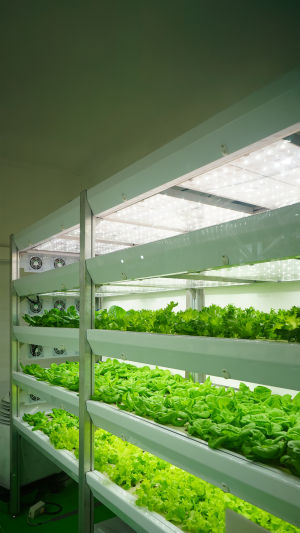Walking past a skyscraper, you might imagine glass offices and apartment windows—but what if those walls held rows of leafy greens instead?
Vertical farming is turning that idea into reality, stacking layers of crops in urban spaces where traditional farms can't fit. This approach isn't just futuristic—it's already helping cities grow fresh, local food efficiently and sustainably.
<h3>What Is Vertical Farming?</h3>
Vertical farming is the practice of growing crops in stacked layers, often indoors or in controlled environments. Unlike traditional fields, these farms use hydroponics, aeroponics, or soil-based systems in vertical setups, allowing farmers to maximize space. By controlling light, temperature, and nutrients, crops can grow faster and year-round, independent of weather conditions.
This method is especially useful in cities, where land is expensive and limited. Instead of spreading out horizontally, vertical farms grow upward, making the most of rooftops, abandoned warehouses, or specially designed towers.
<h3>Why Cities Benefit</h3>
Urban agriculture faces challenges like space constraints, pollution, and limited water. Vertical farms tackle these issues in several ways:
1. Space Efficiency: A single city rooftop or warehouse can produce as much as multiple acres of conventional farmland. Stacking crops vertically reduces the footprint needed to feed urban populations.
2. Water Savings: Many vertical farms use hydroponic or aeroponic systems, which recycle water and reduce consumption by up to 90% compared to soil farming.
3. Reduced Transportation: Growing food within the city means fresher produce and fewer miles traveled, lowering carbon emissions and keeping vegetables crisp and nutrient-rich.
<h3>Technologies Behind Vertical Farms</h3>
Vertical farms rely on modern technology to thrive:
• LED Lighting: Adjustable spectrum LEDs provide the exact wavelengths plants need for photosynthesis, ensuring healthy growth without wasting energy.
• Climate Control: Temperature, humidity, and CO2 levels are carefully managed, so plants aren't stressed by sudden weather changes or seasonal variations.
• Automated Systems: Sensors and AI track water, nutrient levels, and plant health. Automation helps farmers respond quickly to problems and increases efficiency.
These technologies allow urban farmers to predict harvests accurately, reduce waste, and maintain consistent quality throughout the year.
<h3>Popular Crops and Strategies</h3>
Leafy greens, herbs, and microgreens dominate vertical farms because they grow quickly and require less space. Lettuce, kale, basil, and arugula are staples. Some farms are experimenting with strawberries, tomatoes, and even small peppers, but these require slightly more care and structural support.
Many farms rotate crops on vertical racks, allowing new seedlings to replace harvested plants immediately. Some use modular towers that can be expanded or relocated, giving flexibility for city planners and entrepreneurs.
<h3>Challenges and Considerations</h3>
While vertical farming is promising, it's not without challenges:
1. High Start-Up Costs: Setting up a vertical farm requires investment in lighting, climate systems, and sensors. Initial expenses can be high, though long-term efficiency and year-round production often offset costs.
2. Energy Usage: Artificial lighting and climate control consume electricity. Farms must balance plant growth with sustainable energy solutions, such as solar panels or energy-efficient LEDs.
3. Limited Crop Variety: Root vegetables and large fruiting plants are harder to grow in vertical systems, so farms focus on high-value, fast-growing crops.
Despite these hurdles, innovation continues to expand possibilities, with hybrid systems combining soil and hydroponics or integrating renewable energy sources.
<h3>How You Can Support Urban Farming</h3>
Even if you don't own a rooftop, there are ways to engage with vertical agriculture:
1. Buy Local Produce: Supporting city-grown vegetables helps vertical farms remain economically viable.
2. Community Gardens: Some vertical farms partner with schools or neighborhoods, offering educational programs and access to fresh greens.
3. Stay Informed: Understanding the benefits of urban agriculture encourages city policies that allocate space for these farms and reduce barriers for new projects.
<h3>Why It Matters</h3>
Vertical farming shows that urban spaces don't have to be gray and sterile. They can host lush, productive greenery that feeds residents, saves water, and reduces environmental impact. Watching crops thrive under LED lights in a once-abandoned warehouse is a reminder that innovation and nature can coexist.
Next time you pass a city building, imagine rows of lettuce, basil, and kale stacked layer upon layer inside. It's more than a futuristic vision—it's a glimpse into how cities can feed themselves sustainably. Vertical farming proves that with creativity, limited space doesn't have to limit growth, and urban life can be greener, fresher, and more resilient.





